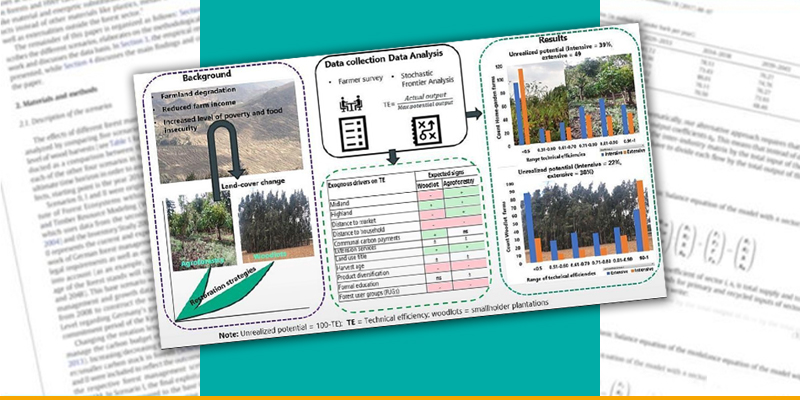In Ethiopia, similar to other parts of Sub-Saharan Africa, farmland degradation impacts about 85% of the urban and rural population. As a coping mechanism to climate change and reversing degradation levels, farmers integrate Trees on Farm (ToF) through farmer-led restoration strategies e.g, traditional agroforestry or woodlot systems. ToF practices can potentially bring economic and ecological gains but their production and technical efficiency remains overlooked globally.
The current publication estimates the technical (management) efficiency of farmers who implement the ToF strategies, i.e., the extent to which the farmers can achieve the highest output level given their set of inputs. We also analyze the drivers of technical inefficiency by controlling for geographical, biophysical, and production system attributes, household traits and institutional settings.
Our results indicate that a large proportion of farmers are technically inefficient. Also, technical inefficiency is simultaneously determined by ecological zones, access to markets, access to communal carbon payments, forest user groups, training, land title factors, rotation age and product diversification, among others.
We recommend that, both policy makers and forest landscape restoration practitioners should consider the above factors to improve the efficiency management of farmer-led restoration strategies in Ethiopia and the global south.
- Ahimbisibwe V, Zhunusova E, Kassa H, Günter S (2024) Technical efficiency drivers of farmer-led restoration strategies, and how substantial is the unrealised potential for farm output? Agric Syst 213:103799, DOI:10.1016/j.agsy.2023.103799
- Project:
Forest Restoration








